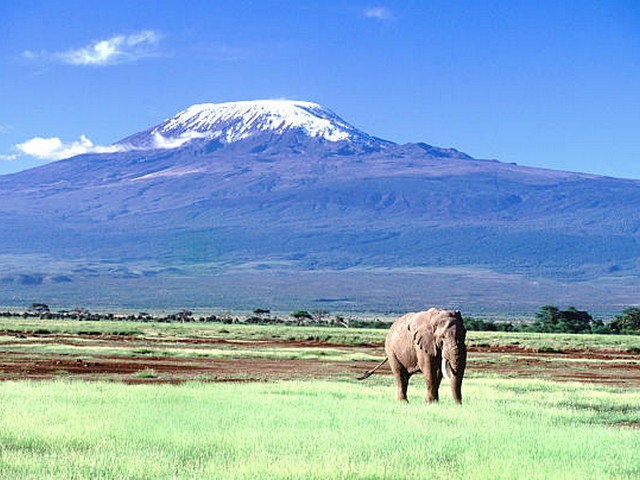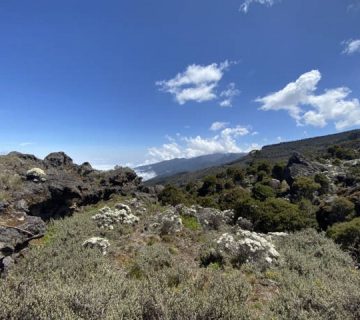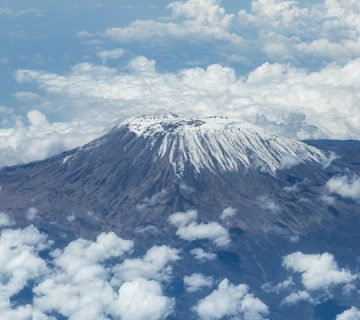Eco-Conscious Travel Guides For Kilimanjaro Trekkers
Discovering Kilimanjaro with a Lighter Footprint
Welcome to the heart of Tanzania, where the majestic Mount Kilimanjaro calls to adventurers from around the globe. As stewards of this iconic peak, we at Kilimanjaro Centre For Trekking and Ecotourism (KCTE) are committed to ensuring that every trekker receives not only a transformative journey but also leaves minimal impact on the natural environment. Are you ready to embark on an eco-conscious voyage to the roof of Africa? This guide will equip you with all the essential knowledge and inspire you to embrace sustainable practices as you ascend the awe-inspiring slopes of Kilimanjaro.
Why Eco-Conscious Trekking Matters
Mount Kilimanjaro is not just a mountain; it is a beacon of biodiversity, a natural wonder that deserves our respect and protection. Eco-conscious trekking ensures that we preserve its beauty and resources for future generations while enjoying the profound personal growth that comes from such treks. Sustainable travel practices help protect wildlife habitats, reduce carbon footprints, and support local communities economically and socially.
Planning Your Eco-Friendly Kilimanjaro Adventure
Selecting the Right Tour Operator
Choosing an operator like Kilimanjaro Centre For Trekking and Ecotourism (KCTE) is crucial. We are dedicated to sustainable practices, from waste management to water conservation and supporting local communities. Ensure your tour operator has a solid sustainability policy and adheres to the principles of Leave No Trace.
Best Time to Trek
Timing your climb can help reduce the environmental strain on the trails. The best times to visit Kilimanjaro are during the dry seasons from June to October and January to March. These periods offer favorable weather while helping manage the flow of trekkers, thereby minimizing trail erosion and human impact.
Gear and Packing List
Packing with sustainability in mind is key. Opt for reusable water bottles, solar chargers, eco-friendly toiletries, and durable trekking gear that you can use on multiple trips. Renting gear from local outfitters like KCTE also reduces your travel footprint and supports the local economy.
On the Trail: Sustainable Trekking Practices
Waste Management
Carry out what you carry in. Keeping Kilimanjaro clean is a collective responsibility. Use biodegradable bags for waste, and be meticulous about disposing of any trash at designated points or taking it back down the mountain.
Water Conservation
Water is a precious resource on Kilimanjaro. Use water sparingly and consider using water purification tablets instead of buying bottled water. This not only reduces plastic waste but also lessens the load on porters who ascend the mountain.
Respecting Wildlife and Flora
Kilimanjaro is home to unique flora and fauna. Stick to marked paths to avoid disturbing natural habitats and never feed or attempt to touch the wildlife.
The Role of Local Communities in Kilimanjaro’s Conservation
Supporting Local Enterprise
Choosing KCTE means directly supporting the communities around Kilimanjaro. We employ local guides and porters and source supplies from local vendors. Engaging with and respecting local cultures enriches your trekking experience and contributes to economic sustainability.
Learning from the Chagga People
The indigenous Chagga people have lived on the slopes of Kilimanjaro for centuries. Their traditional knowledge and practices in sustainable agriculture and natural resource management are invaluable. Take time to learn from them during your trek.
After Your Trek: Continuing the Eco-Conscious Journey
Sharing Your Experience
Become an ambassador of eco-conscious travel. Share your Kilimanjaro experience and the sustainable practices you learned. Inspiring others can amplify the impact of ecological conservation.
Offset Your Carbon Footprint
Consider offsetting the carbon emissions from your travel to Tanzania. Investing in reforestation projects or renewable energy initiatives in the region can contribute to a greener planet.
FAQ: Eco-Conscious Kilimanjaro Trekking
Q: How difficult is it to implement sustainable practices on a Kilimanjaro trek?
A: With the right preparation and mindset, it is very manageable. Operators like KCTE provide guidance and support throughout the process.
Q: Can I participate in local conservation efforts during my trip?
A: Absolutely! KCTE offers programs where trekkers can engage in conservation activities, such as tree planting or community clean-ups.
Q: Are there eco-certified lodgings near Kilimanjaro?
A: Yes, there are several accommodations committed to sustainability. We can help you book these eco-friendly options.
Q: What is the best way to minimize water use on the mountain?
A: Bring a refillable water container and use water purification methods. Avoid short, frequent uses of water and be conscious of your consumption.
Embrace Your Eco-Conscious Journey with KCTE
Embarking on a Kilimanjaro trek is more than just a physical challenge; it’s a commitment to preserve the beauty and integrity of one of the world’s most awe-inspiring natural wonders. Kilimanjaro Centre For Trekking and Ecotourism (KCTE) is here to guide you through an eco-friendly adventure that you will cherish for a lifetime. Join us in treading lightly and lovingly on the sacred slopes of Kilimanjaro.
Ready to make your Kilimanjaro dream a reality while upholding the values of sustainability? Book your climb with KCTE today and step into the adventure of a lifetime with a conscience as clear as the African sky!




